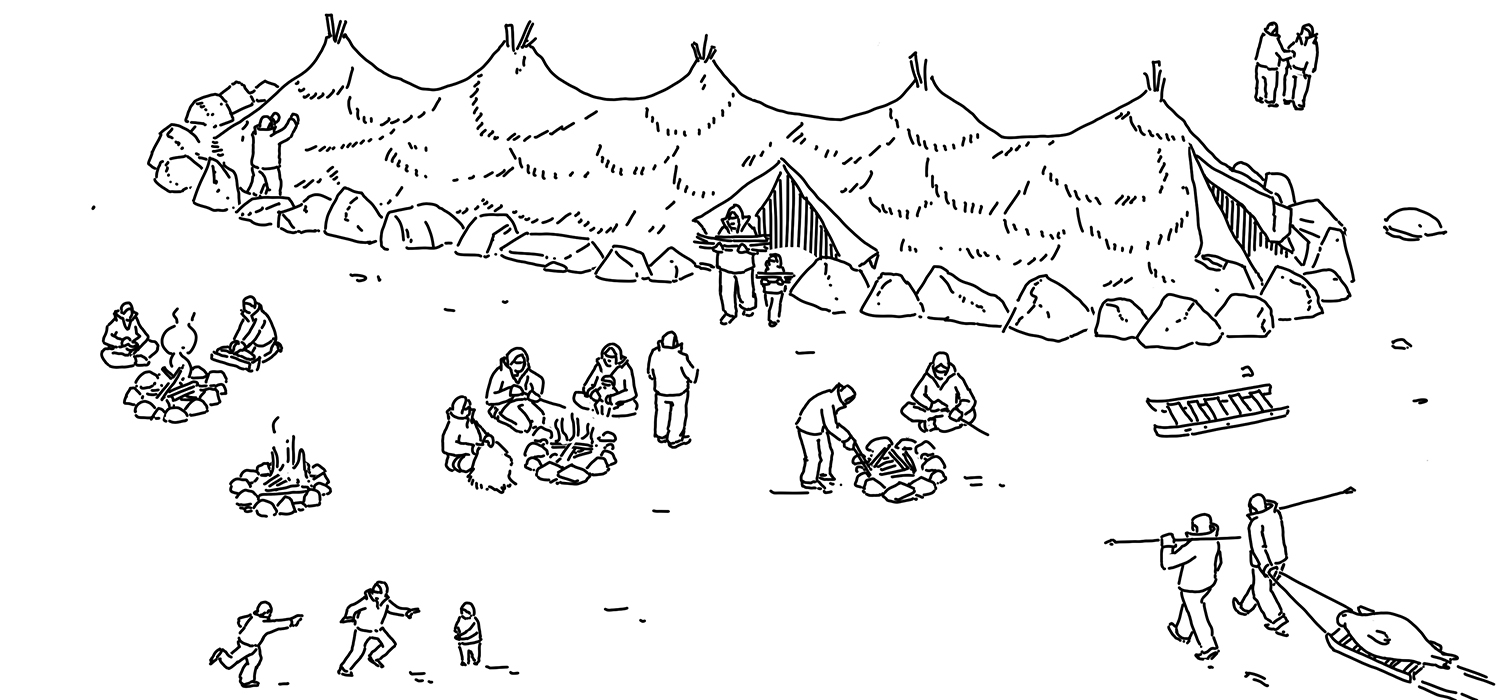The earliest peoples to settle the Arctic used specialized tools and unique strategies to thrive in the harshest climate in North America.
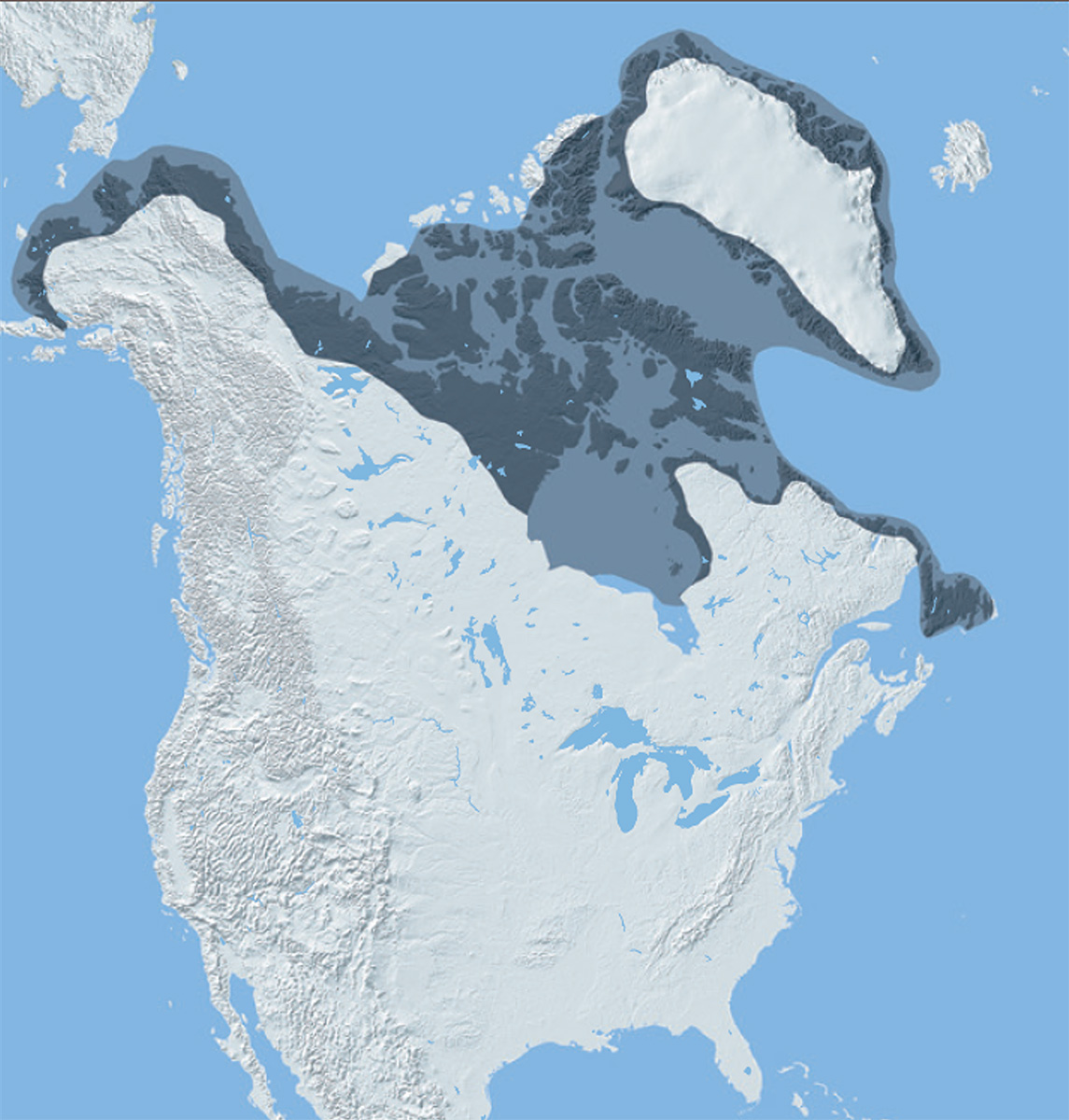
Arctic culture area
By 4,500 years ago, First Peoples from Alaska had begun moving into the Canadian Arctic. Well adapted to Arctic environments, their culture thrived for nearly 4,000 years.
Over time, they developed a rich artistic tradition. Their art reveals a close spiritual bond with animals. However, by 700 years ago these peoples had disappeared, leaving no descendants.
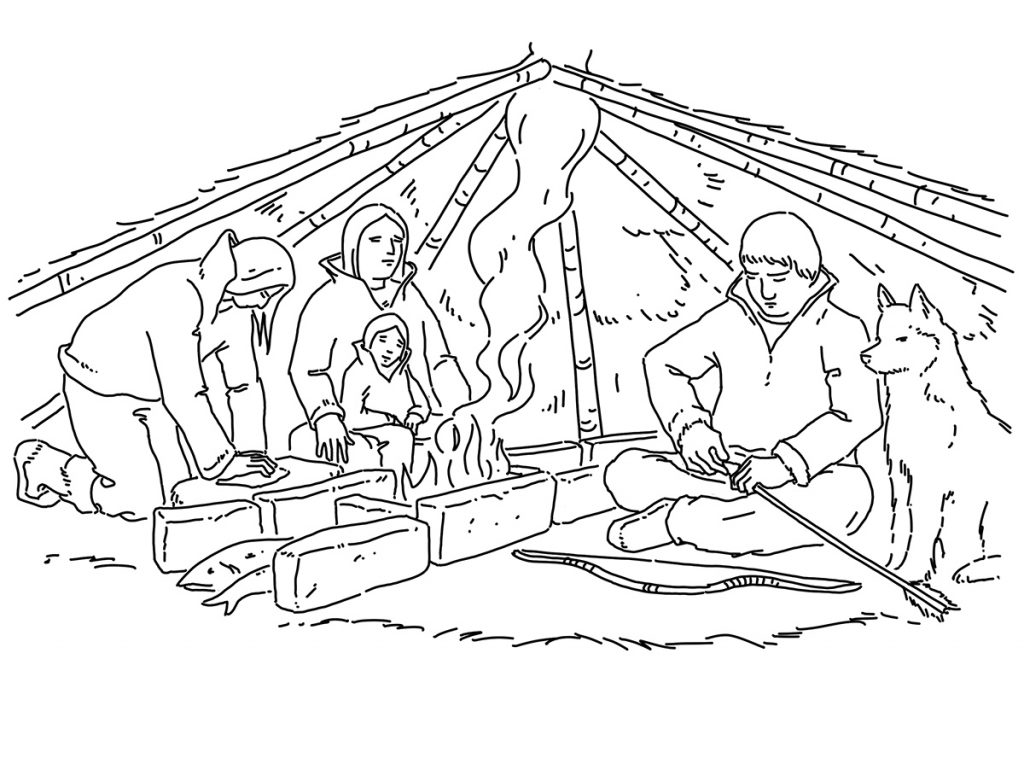
The First People of the Arctic
“Independence I” people moved into the Canadian Arctic from Alaska 4,500 years ago. They are named for the fjord in Greenland where the archaeological remains of their campsites were first discovered.
These people lived in small skin tents, heated by burning animal bones and dung. Animal remains found at their sites indicate that they hunted seals and muskox. Their tiny, exquisitely made tools are a hallmark of their society.
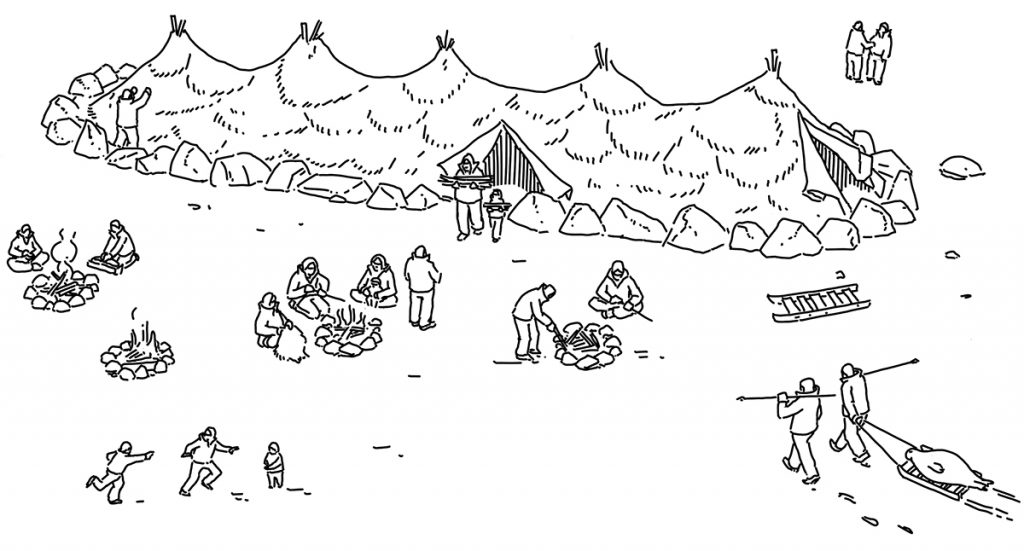
Who were the Dorset
West Coast peoples made complex fishing and hunting tools. Fishing often required composite tools made from many materials.
About 2,500 years ago, a new culture, the Dorset, emerged in the Arctic. Archaeologists named these people after Cape Dorset, in Nunavut. Like their Independence I ancestors, they hunted seals, caribou and muskox. Mysteriously, they abandoned bows and arrows, watercraft and dogs.
They dressed in carefully made skin clothing and sometimes lived seasonally in massive communal longhouses.The Dorset’s exquisite artwork explains much about their culture and spiritual life.
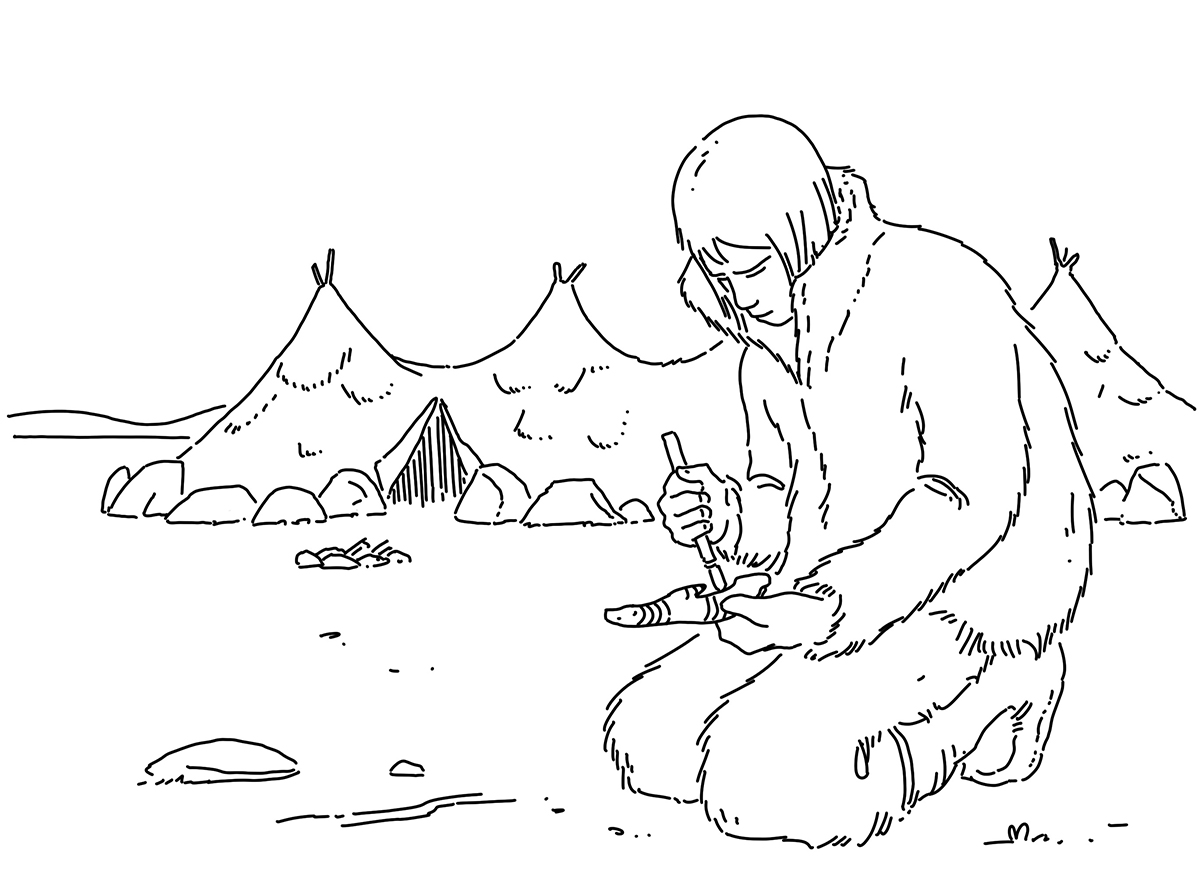
Art and Spirituality
The Dorset created exquisite art. Made from wood, antler, ivory and stone, their carvings include real and hybrid animals and humans, as well as ritual objects.
Archaeologists believe that Dorset art reveals a deep spiritual connection with animals. They may have used their sculptures to communicate with animals and draw spiritual power. These sculptures likely represent how the Dorset saw their world and themselves.

A Ritual Toolkit
Some unique objects recovered from Dorset sites may have been used by shamans. These objects include drums, antler batons with numerous carved faces, ivory tubes or bells, masks and wolves’ teeth. They may have been part of a toolkit used by a Dorset shaman to access the spiritual realm and the power it contained.
Archaeologists recovered this small Dorset drum from a site on Bylot Island, Nunavut. This drum has a sequence of lines carved on its rim. Archaeologists speculate that these lines represent musical notation. If so, they likely signify a series of drumbeats played during a ceremony.

Dorset drum
CMH, PfFm-1:1750
Listen to a recording of archaeologist Chris Wolff playing a replica Dorset drum.
